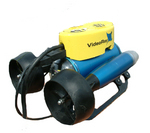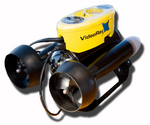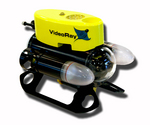Emergency Response to a Flooded ROV
If you suspect that the ROV is experiencing a leak during operations, there are four critical steps to remember:
- Turn off the power.
- Retrieve the ROV.
- Clean affected components of any corrosive elements.
- Dry affected components.
Additional details are provided below, but it is important that you cut the power as soon as a leak is suspected and clean and dry the system as soon as possible. You should not attempt to "test" the equipment until you are sure it is completely dry. Turning the power on while the components are wet will likely cause more damage.
The following detailed procedures will not guarantee recovery from a flood incident, but they will provide the best chances of salvaging as much as possible
- Turn off the power.
- Retrieve the ROV if not already retrieved.
- Open the ROV and drain the water
- Determine if any electronic components got wet.
- Rinse wet components in distilled water as soon as possible. If you do not have distilled water, use fresh water as soon as possible and follow up with a rinse in distilled water as soon as possible after that.
- Rinse the components with alcohol.
- Place the components in a sealed container with a desiccant for at least 24 hours. Uncooked rice can be used as a desiccant.
- Remove the components from the desiccant and examine them for signs of corrosion or other damage such as loose parts.
- If no damage is observed, reassemble the circuits, without sealing the ROV.
- Test the ROV functions.
- Reassemble the ROV to the sealed state.
|










